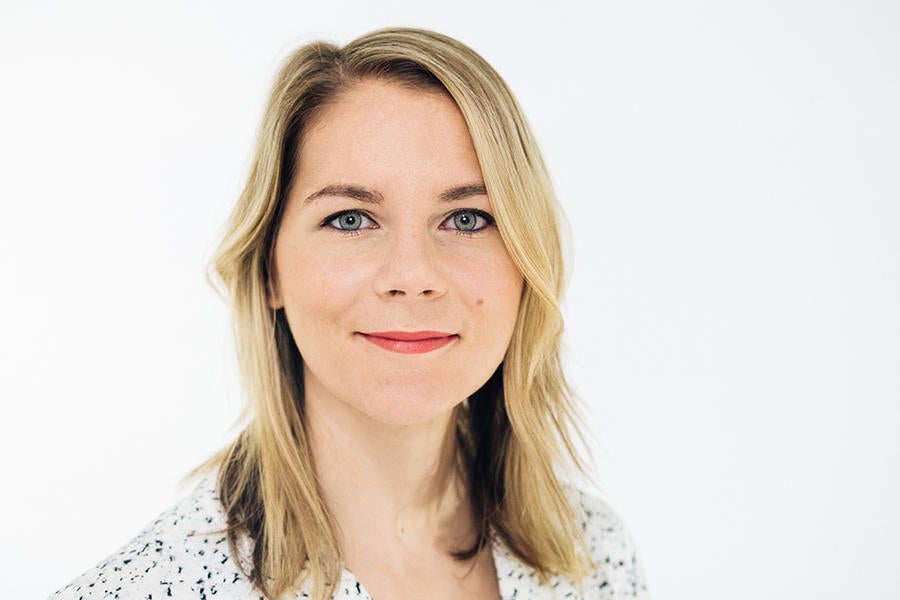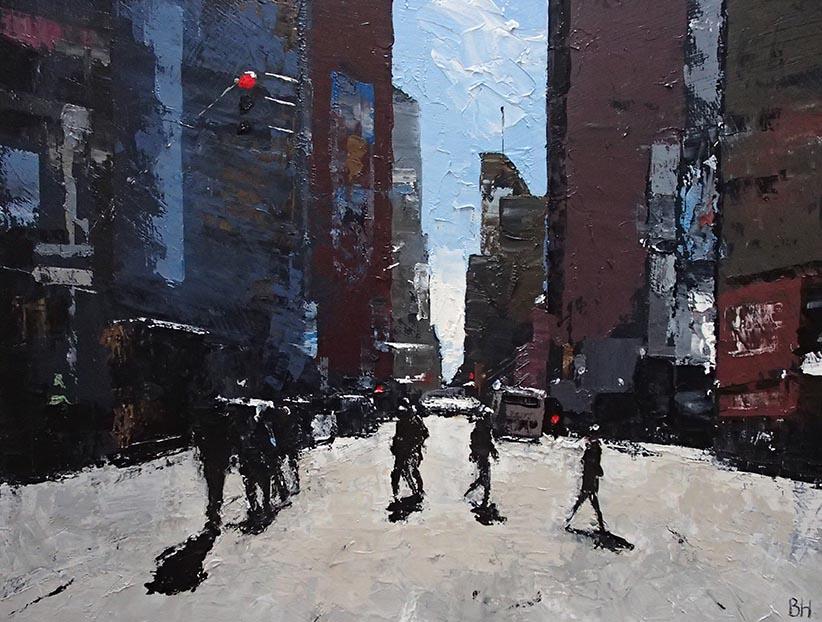“Affordable” means something different to everyone. But for two decades, the Affordable Art Fair has planted a flag in the ground, rallying around the notion that there’s a robust market for gallery-represented artists selling contemporary works at a price point within reach for entry-level collectors.
After launching in London 20 years ago, the fair made its New York debut in 2002. When the fall edition of the biannual fair opens tomorrow, it will feature 1,000 works by more than 300 artists, each piece selling for $100 to $10,000—with more than half of those under $5,000.
It’s a price range that resonates with many designers whose clients haven’t yet amassed a megawatt collection. The fair has taken note, and for the first time is offering early access to the trade: For an hour before the show opens to the public on Thursday and Friday, art and design professionals (and their clients) are free to walk, shop and network with the 70 dealers exhibiting.

“We have identified the need, based on conversations with engaged galleries, to cater more toward the trade community,” fair director Vanessa Seis tells Business of Home. “They can come and shop themselves, or with a client, before it gets crazy.”
The fair will also host a lunchtime lecture series for its trade audience, hosted in partnership with the Female Design Council and the Black Artists + Designers Guild. With a focus on the intersection of art and design, Seis hopes the talks will inspire ideas and connections among the attending designers, architects and art advisers.
The promise of affordability attracts an eclectic array of attendees and participating galleries. The fair hosts events like its popular Art After Dark party with younger patrons in mind, although the millennial crowd makes up only a quarter of attendees, with plenty of beginner collectors from older generations. (“An art novice doesn’t mean a young person, necessarily,” says Seis.)
It is an entry-level fair not just for many buyers, but for exhibitors too. “We’re often the first art fair that galleries do,” says Seis. “Some have grown with us, some eventually graduate and move on. Some galleries have different programs for different fairs; they’ll go to a higher-end fair with a higher-end program and bring their more emerging program to us.” This year’s lineup boasts a roughly equal mix of new and returning exhibitors—and for the repeating galleries, Seis says the team asks them to bring artists and works that are new to the market.

“We started out with the idea to make art accessible and create an environment where everyone feels welcome, and that’s an idea we still carry [forward] today,” says Seis. “I think we’re good at lowering the barrier—we talk to you, and not in a patronizing way. Our exhibitors love to talk about their artists and the work, which creates an open, educational environment.”
Extending that inclusive philosophy to the internet, Affordable Art Fair launched an online marketplace in the United Kingdom and elsewhere in Europe last year. Though it has yet to roll out e-commerce in the U.S., Seis says the initial foray has been a success: “It’s been a wonderful continuation of the idea of making art accessible to everyone,” she explains. “Our online marketplace is still in that affordable bracket, and I think there’s so much potential there.”
Longtime followers of the fair won’t be shocked by its move online. The organization has long been a pioneering force for radical transparency; since the show’s inception, it has required that all artworks be labeled with information about the piece—including price. “At a lot of art fairs, you have to ask the gallery for information,” says Seis. “At the Affordable Art Fair, we require that artwork labels on the walls include the name, edition size and price. Even if you’re shy, you know what’s in front of you—and that’s really important. Buying art is an emotional process for most people, but an informed buyer will make an informed decision that they feel good about for a long time.”
The Affordable Art Fair runs September 26 to 29 at the Metropolitan Pavilion in New York (125 W. 18th St.). Tickets to the fair are available here. The Lunch Time Talks series takes place in the Inspiration Lounge at 12 p.m. on September 26 (with the Female Design Council) and September 27 (with the Black Artists + Designers Guild).




























